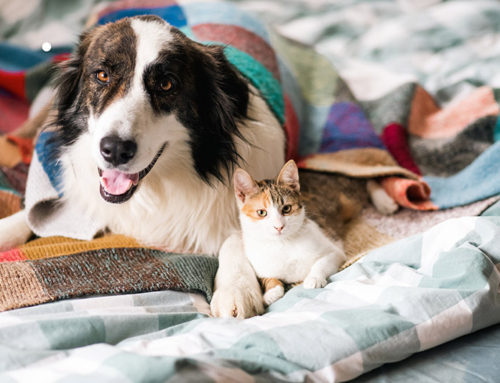 Bloat is the common term for gastric dilatation-volvulus syndrome (GDV) in dogs. It occurs when a dog’s stomach becomes distended-bloated or dilated-with food, gas and or fluid. The reason this occurs is not completely understood but it is thought to be the result of a dog eating or drinking too much at once, eating too quickly, gulping a lot of air while eating or drinking or exercising immediately before or after eating or drinking. It occurs in large and deep-chested dogs such as Great Danes and Rottweilers and is usually seen in geriatric dogs. Genetics and anatomy play a role in dogs developing this life-threatening disease.
Bloat is the common term for gastric dilatation-volvulus syndrome (GDV) in dogs. It occurs when a dog’s stomach becomes distended-bloated or dilated-with food, gas and or fluid. The reason this occurs is not completely understood but it is thought to be the result of a dog eating or drinking too much at once, eating too quickly, gulping a lot of air while eating or drinking or exercising immediately before or after eating or drinking. It occurs in large and deep-chested dogs such as Great Danes and Rottweilers and is usually seen in geriatric dogs. Genetics and anatomy play a role in dogs developing this life-threatening disease.
A bloated dog is a medical emergency. The first sign is usually a sudden distended, painful abdomen. The dog may be restless, panting and try unsuccessfully to vomit. As the stomach expands it cuts off the blood supply to internal organs and the blood is also prevented from returning to the heart to get oxygen. The larger the stomach gets the less space the lungs have to expand and fill with air. Breathing becomes increasingly difficult and the dog may go into shock (a complete collapse of the circulatory system) because of the lack of oxygen. A bloated dog quickly becomes in a life-threatening situation often within thirty minutes to an hour. In the worst cases, the stomach becomes twisted, closing off the entry and exit to the stomach. X-ryas are taken to evaluate the position of the stomach and to determine if it is twisted Heart complications are common and after the dog is stabilized from shock emergency abdominal surgery is needed to empty the stomach and put it back in its proper place. Sometimes the spleen may have to be removed if it is damaged and the stomach is sutured in place to prevent a recurrence. Studies have found that dogs who eat fewer meals per day, eat rapidly and are nervous or fearful are those most likely to develop GDV. If your dog is large and or deep-chested, has a family history of GDV, or tends to be a fast eater, there are steps you can take to help prevent GDV. Feed several small meals per day, rather than one or two large ones. Never feed or allow your pet to drink large amounts of water immediately before or after eating or exercising; a two-hour practice is good. Feed your dog separately from other dogs, so she doesn’t rush to finish and encourage them to rest quietly after eating.





